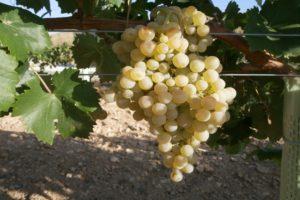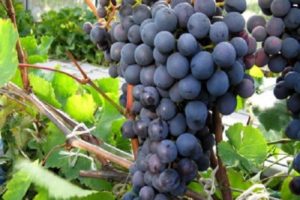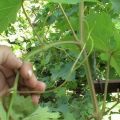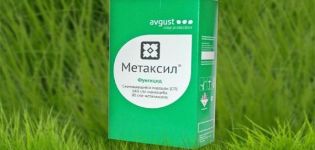Description and characteristics of the grape variety Fun, history and subtleties of cultivation
Growing grapes is a process that requires the necessary knowledge and skills to avoid mistakes and get stable yields. Before tackling such an exciting business, you should study the basic rules and requirements of care, decide on a variety suitable for the region. Often, beginner gardeners are advised to start with Zabava grapes, which are distinguished by qualities attractive to a beginner - unpretentiousness and resistance to adverse external factors.
The history of breeding variety Zabava
The variety Zabava was obtained by crossing Codryanka and Laura. The breeder who bred this wonderful variety is V.V. Zagorulko, a well-known specialist from Ukraine, who has worked all his life at experimental stations in Russia. The age of the variety is several decades. This time was enough for the gardeners to be convinced of the advantages of Fun and confidently bring the grapes to the leading places.
Brief characteristics of the hybrid
Studying the characteristics and description of the grapes Fun is a prerequisite that must be met in advance.
Knowing what requirements the variety provides, what to expect from the plant, it is easy to prevent unpleasant problems and improve yields.
Appearance
A distinctive feature of Zabava grapes is active growth. In a short time, the plants produce powerful long shoots that need pruning. Dark fruits are rather large, with proper care they exceed 10 g. Bunches resemble an elongated cone. The bunch weight often reaches 800-900 g.
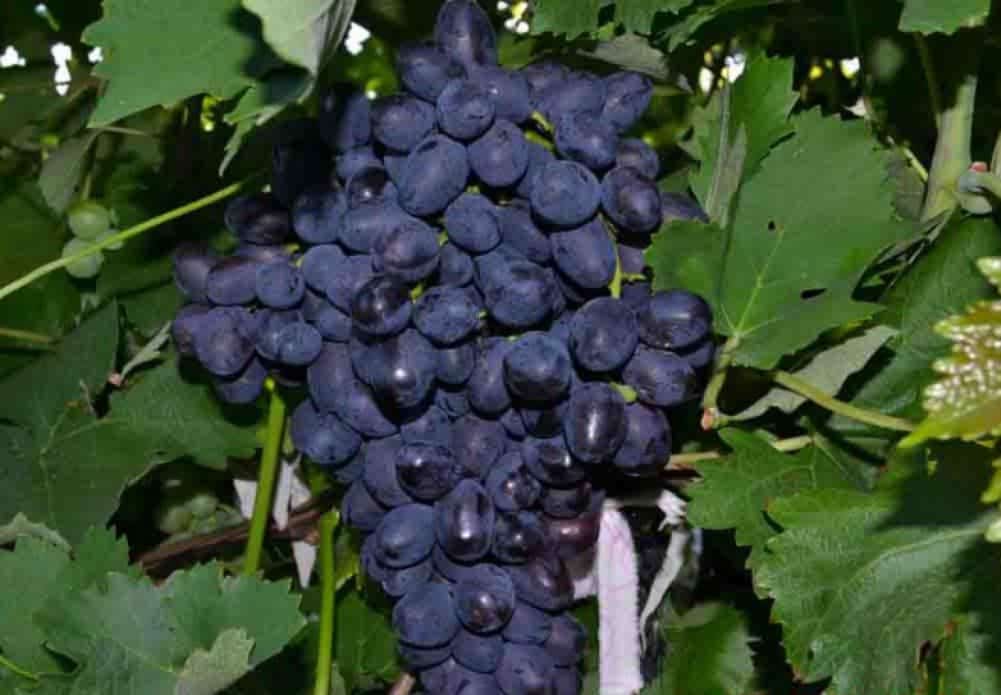
Taste qualities of berries
The taste of Zabava fruit is a combination of sourness and sweetness. The berries have a bright nutmeg aftertaste. The fruits are juicy and have a thin skin.
Pollination
Bushes form inflorescences of two sexes, so pollinators do not have to be planted. Self-pollination guarantees an excellent harvest and numerous bunches.
Low temperature resistance
Frost resistance in grapes Fun is average - in frosts below 22 degrees there is a risk of freezing of plants. It is recommended to use winter shelters that will protect against adverse effects.
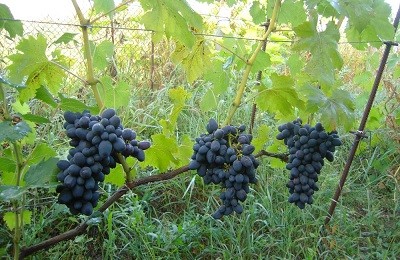
What diseases are grapes prone to
Gray rot and powdery mildew rarely affect the plant, high immunity allows you not to worry about the disease of the bushes.The only disease that can lead to the death of Zabava grapes is mildew.
Vine propagation methods
The main methods of reproduction of Fun are cuttings and layering. Cuttings are best harvested and planted in containers in autumn or spring. Reproduction by layering is recommended in late spring or summer, good roots will have time to grow before autumn.
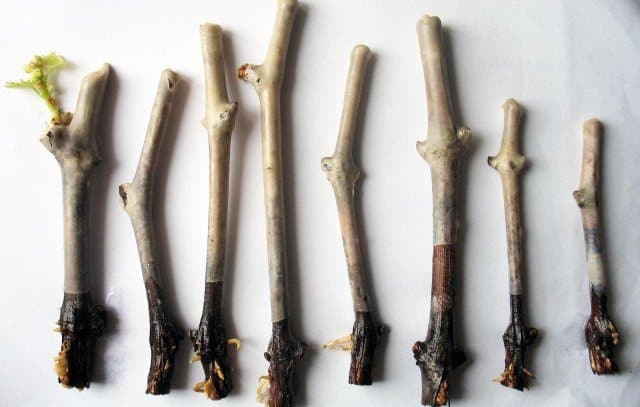
Planting and agricultural technology
Planting and further care for the Fun are processes that even a novice gardener can handle. The main thing is to understand in advance the basic requirements of the variety.
Site and soil requirements
For Zabava grapes, it is recommended to choose the lightest and most comfortable area in the garden. Planting near buildings also has its advantages; strong winds will not damage the bushes.The variety prefers fertile soil, groundwater should not pass too close to the surface. Place a thick layer of drainage if necessary.
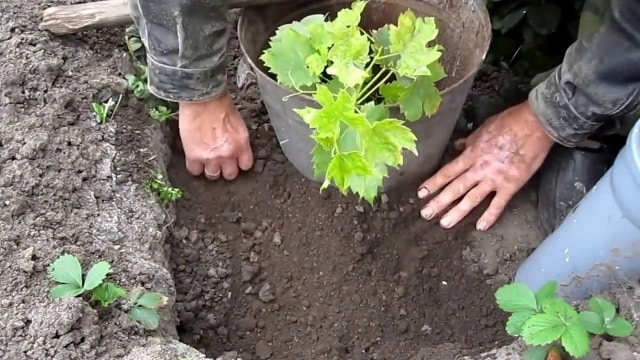
Composition of soil mixes
If the soil in the garden has a poor composition, add to the holes during planting:
- river coarse sand;
- black soil;
- peat;
- humus.
When preparing the soil mixture, it is also recommended to add a little mineral fertilizers.
Timing and seating scheme of seedlings
It is recommended to plant grapes long before winter frosts or soon after the onset of stable heat. For harsh regions, spring planting is best. Bushes are planted in single or multiple rows.
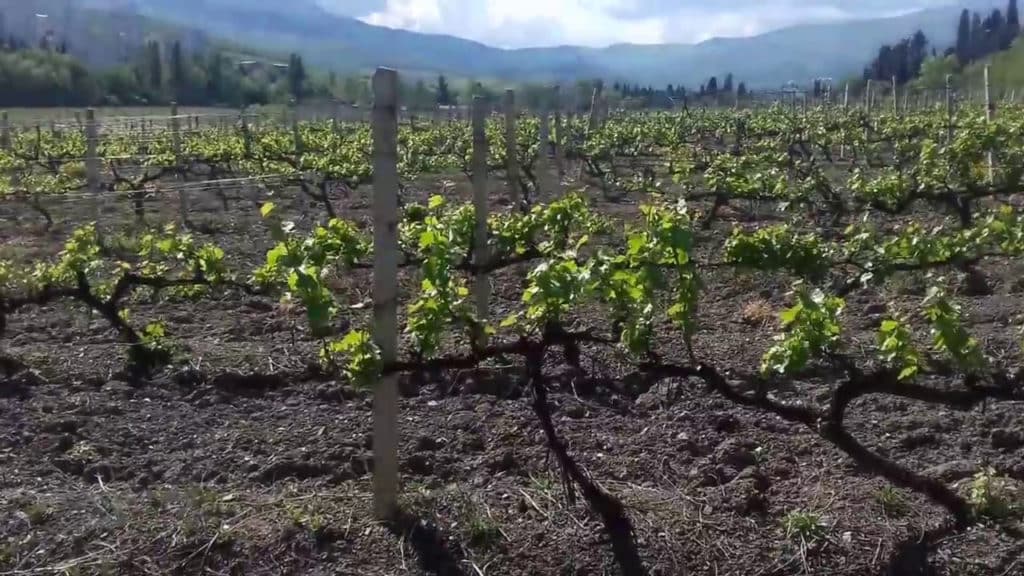
Into the pit
If one bush is planted, make the hole up to 80 cm deep, 60 cm in diameter. It is recommended to retreat from trees or shrubs. The distance between plants is up to 3 m.
In the trenches
The Zabava bush is rather large, therefore it is recommended to leave a distance of 2-4 m between the plants when planting. It is recommended to build supports simultaneously with planting.
In rows
Planting in rows requires maintaining the recommended spacing. Leave 2-3 m between the bushes, do 2-2.5 m between rows.
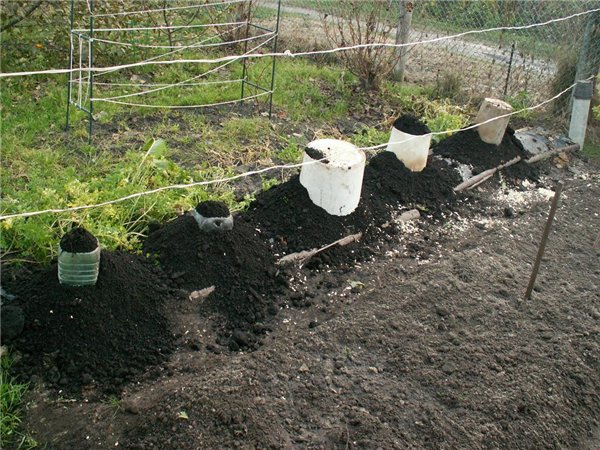
Watering frequency
Irrigate the soil every 2-4 days in hot weather. Add at least 20 liters of water under one adult grape bush Fun. Be sure to keep the liquid in the sun during the day. Before irrigation, loosen the soil.
Top dressing of young and fruiting vines
Fertilizing is a prerequisite for increasing the yield and improving the development of grape bushes. It is recommended to use complex formulations offered by gardening shops.In the spring, after the onset of heat, use organic fertilizers - rotted manure, compost. Apply nutrient formulations as a mulch layer.

Shaping and garter to the posts
It is recommended to form a bush 2-3 years after planting. Usually only a part of the main stem is removed, leaving a short stem (up to 1 m). Formative pruning is carried out annually, thickened, dry, damaged shoots are removed. Tie the grapes to the supports immediately after planting. For a year, shoots grow more than 15 cm in height, so you should take care of persistent high supports.
Infection and insect treatment
Preventive treatments are the only way to protect Fun bushes from disease or pest occupation. It is recommended to use chemicals with long exposure times. The use of folk remedies will have to be carried out weekly, sparing formulations quickly lose their qualities.
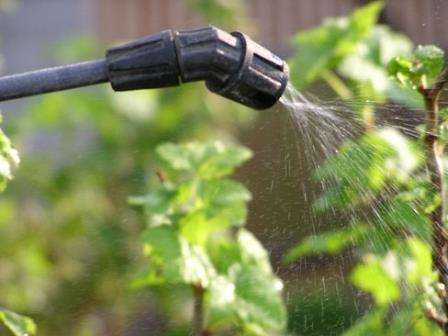
Preparing for winter
In regions with a warm climate, it is not necessary to prepare the bushes for wintering. In areas that are characterized by severe winter frosts, you will have to resort to shelter. Carefully remove the vines from the supports, lay them only on a thick pillow of straw and spruce branches. Cover the top with straw mats, ephedra, geotextile.In winter, cover the grapes with snow, but make sure that the snow layer is not too thick.
The beginning of fruiting. Ripening terms
The first fruits of the grapes Zabava will give only 2-3 years after planting. It is recommended to leave only 2-3 ovaries, the abundance of bunches can damage the bush. Fruit picking begins in early or mid-August. In regions with a cool summer climate, ripening occurs a little later - in early September.
Collection and storage of bunches
Gathering grapes of grapes Fun is recommended to be careful not to damage the vines. Carry out the process with a garden pruner. After collecting, sort out the berries. Send the densest healthy bunches to the basement or refrigerator for storage, the rest immediately to be recycled - in conservation, for wine, for desserts. Fun is one of the favorite varieties of many gardeners. Even in the absence of increased attention, the grape variety bears excellent fruit and develops. Watering, applying nutrients and regular pruning is enough for the bush to reward with a wonderful harvest.
